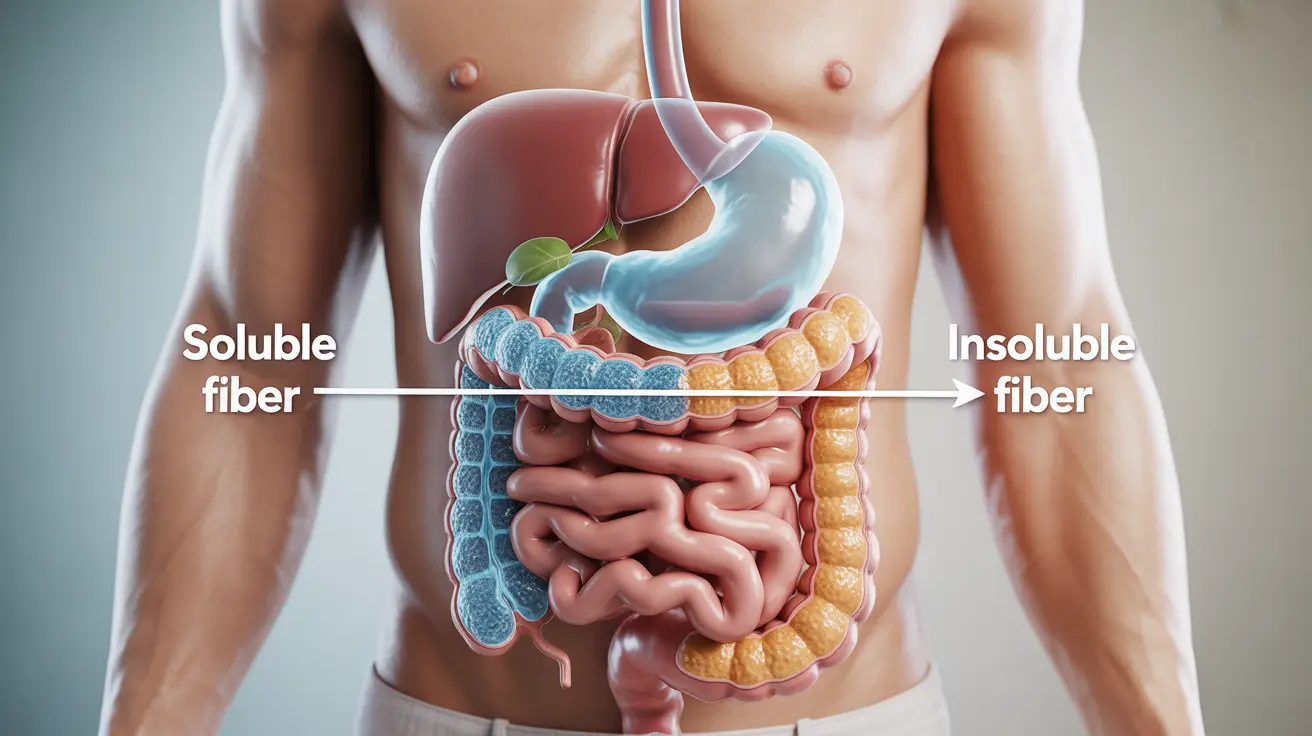Dietary fiber plays a crucial role in maintaining digestive health and overall wellness, but not all fiber works the same way in your body. Understanding the distinction between soluble and insoluble fiber can help you make better dietary choices and optimize your health benefits from fiber consumption.
In this comprehensive guide, we'll explore the unique characteristics of both types of fiber, their specific health benefits, and how to incorporate them effectively into your daily diet.
What Makes Soluble and Insoluble Fiber Different?
Soluble fiber dissolves in water to form a gel-like substance in your digestive system. This type of fiber slows down digestion, helping you feel fuller longer and providing several metabolic benefits. When soluble fiber combines with water, it creates a soft, viscous material that can help regulate cholesterol and blood sugar levels.
In contrast, insoluble fiber doesn't dissolve in water. Instead, it passes through your digestive system largely intact, adding bulk to stool and helping food move more quickly through your stomach and intestines. This mechanical action helps prevent constipation and promotes regular bowel movements.
Health Benefits of Soluble Fiber
Blood Sugar Control
Soluble fiber helps slow down the absorption of sugar in your bloodstream, which can help prevent rapid spikes in blood glucose levels. This makes it particularly beneficial for people with diabetes or those at risk of developing the condition.
Cholesterol Management
When soluble fiber forms a gel in your digestive system, it can bind to cholesterol particles and help remove them from your body. This process can lead to lower LDL (bad) cholesterol levels, supporting heart health.
Health Benefits of Insoluble Fiber
Digestive Health
Insoluble fiber acts as a natural laxative by adding bulk to stool and speeding up the passage of food through your digestive tract. This helps prevent constipation and maintains regular bowel movements.
Weight Management
Both types of fiber contribute to weight management, but insoluble fiber specifically helps create a feeling of fullness without adding calories, which can aid in portion control and weight maintenance.
Best Food Sources for Both Types of Fiber
Soluble Fiber Sources
Common foods rich in soluble fiber include:
- Oats and oat bran
- Beans and legumes
- Apples
- Citrus fruits
- Barley
- Psyllium husks
Insoluble Fiber Sources
Excellent sources of insoluble fiber include:
- Whole wheat products
- Wheat bran
- Nuts and seeds
- Vegetables like cauliflower and green beans
- Dark leafy greens
- Corn bran
Tips for Increasing Fiber Intake Safely
When increasing your fiber intake, it's important to do so gradually to avoid digestive discomfort. Start by adding small amounts of high-fiber foods to your diet and increase water intake simultaneously. This approach helps your digestive system adjust and minimizes potential side effects like bloating or gas.
Frequently Asked Questions
What is the difference between soluble and insoluble fiber and how do they affect digestion?
Soluble fiber dissolves in water to form a gel-like substance that slows digestion and helps regulate blood sugar and cholesterol levels. Insoluble fiber doesn't dissolve but adds bulk to stool and helps food move through your digestive system more efficiently.
How does soluble fiber help lower cholesterol and control blood sugar levels?
Soluble fiber forms a gel that binds to cholesterol particles, helping remove them from your body. It also slows down sugar absorption in the bloodstream, preventing rapid blood glucose spikes and supporting better blood sugar control.
What are the best food sources of soluble and insoluble fiber?
Soluble fiber is found in oats, beans, apples, and citrus fruits. Insoluble fiber sources include whole wheat products, nuts, seeds, and many vegetables. A balanced diet should include both types for optimal health benefits.
Can eating too much fiber cause digestive discomfort, and how can I avoid it?
Yes, rapidly increasing fiber intake can cause bloating, gas, and discomfort. To avoid these issues, increase fiber gradually over several weeks and drink plenty of water. This allows your digestive system time to adjust to the higher fiber intake.
Why is it important to include both soluble and insoluble fiber in a healthy diet?
Both types of fiber serve different but complementary functions. Soluble fiber helps with blood sugar and cholesterol control, while insoluble fiber supports digestive health and regularity. Together, they provide comprehensive benefits for overall health and wellness.




